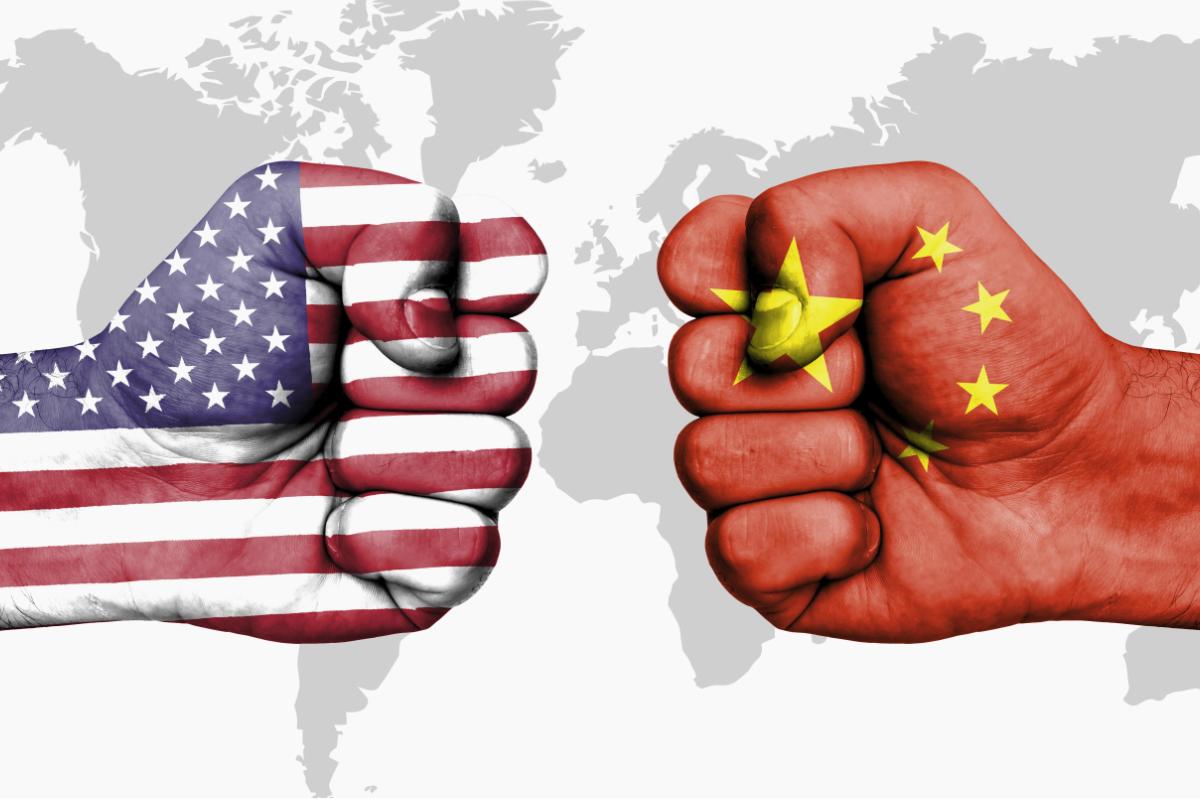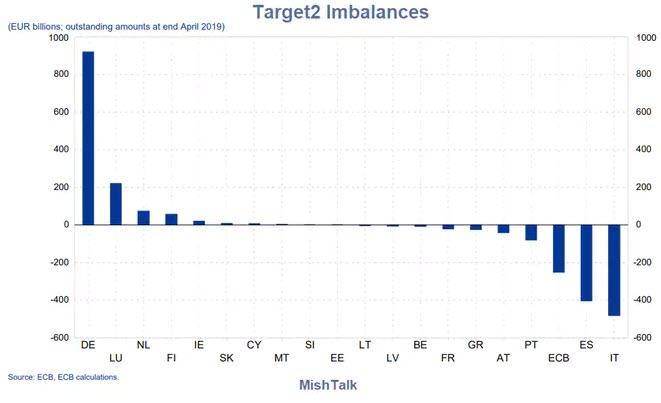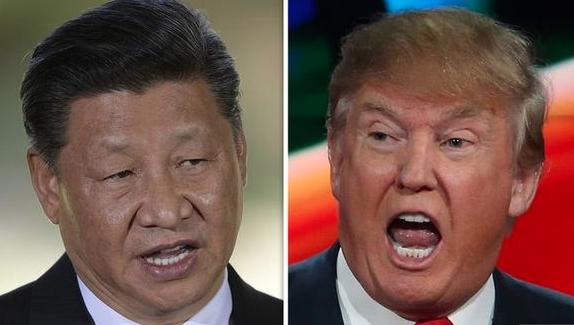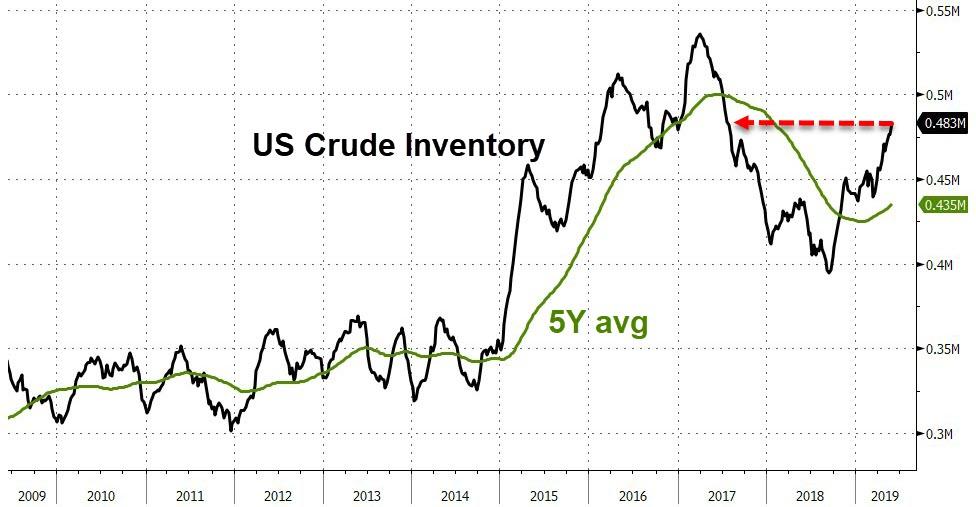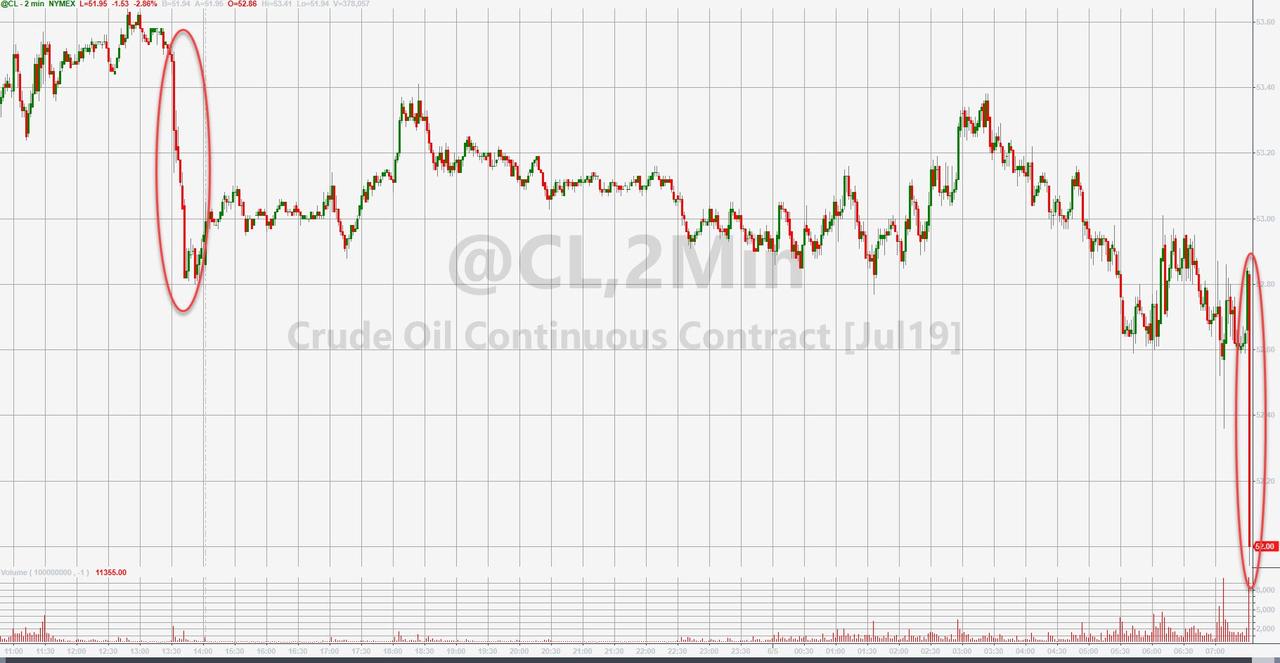Consider the possibility that Neal Stephenson is Satoshi Nakamoto, the pseudonymous inventor of Bitcoin.
If he is, it would hardly be his only accomplishment: Stephenson is the author of some of the most prescient and beloved science fiction of the last 30 years, including Snow Crash, Cryptonomicon, and Seveneves. He has been both disciple and muse to the most powerful men in tech—the inventors of the internet and the iPad, for starters. He was an early employee at Blue Origin, the private space firm founded by Jeff Bezos, and has worked with the Long Now Foundation to promote optimistic science fiction designed to lead to actual technological innovation. He is the sort of writer whose novels include descriptions of vast nanotech defense systems, as well as of incredibly elaborate methods for eating Cap’n Crunch, complete with a special spoon. He keeps his head shaved and wears a gray-streaked goatee, a look that is part heavy metal wizard, part monk.
I am not saying that Neal Stephenson is Satoshi Nakamoto. What I am saying is: Would it really be surprising if he were?
That this outlandish possibility even exists suggests the ingenuity of his mind and the depth of his influence. It’s plausible that Neal Stephenson invented, or helped invent, Bitcoin, because that is simply the sort of thing that Neal Stephenson might do.
*
For nearly three decades, Stephenson’s novels have displayed an obsessive, technically astute fascination with cryptography, digital currency, the social and technological infrastructure of a post-government world, and Asian culture. His novel Anathem is, among other things, an elaborate investigation into the philosophy of knowledge. His new book, Fall; or, Dodge in Hell, pursues these themes literally beyond the grave, into the complications of estate planning and cryogenics. Satoshi Nakamoto sounds like a Neal Stephenson character name. Satoshi Nakamoto’s initials are SN; Neal Stephenson’s are NS.
Of course, Stephenson is far from the only person obsessed with these topics. His early work was heavily influenced by the cypherpunks, a coalition of hacker-technologists obsessed with cryptography, distributed information platforms, and science fiction (the title Cryptonomicon was inspired partly by the Cyphernomicon, a cypherpunk FAQ). It is possible he was and is simply drawing from the same pool of ideas and influences that eventually resulted in the creation of Bitcoin.
But consider this brief history. In 1995—more than a decade before the birth of bitcoin—Stephenson published his fourth novel, The Diamond Age: Or, a Young Lady’s Illustrated Primer. About two-thirds of the way through the book, there’s a passage describing the “media net,” an anonymous peer-to-peer communications system “designed from the ground up to provide privacy and security so that people could use it to transfer money.” Nation-states as we now know them have collapsed, the story explains, because “financial transactions could no longer be monitored by governments,” rendering tax collection impossible. (While he’s at it, Stephenson breezily imagines technologies that resemble both the iPad and Alexa-style artificial intelligence voice recognition as well.)
Four years later, Stephenson published Cryptonomicon, a large adult son of a novel that traces both the World War II origins of cryptography, and efforts by a group of ’90s-era hacker-entrepreneurs to set up a system of anonymous online banking and digital currency outside the reach of traditional governments. He followed this with The Baroque Cycle, a trio of novels, each approximately the size of a piece of industrial farm equipment, exploring the historical foundations of math, money, and modern philosophy.
Stephenson, in other words, described the core concepts of cryptocurrency years before Bitcoin became a technical reality. At bare minimum, you can be sure he spent a lot of time thinking about these concepts and the technical challenges they might pose. Even if Stephenson had no direct role in the creation of Bitcoin, it is hard to imagine that its creators were not aware of, and likely heavily influenced by, his writing.
Stephenson’s vision of an anonymous, decentralized currency jumped the chasm between fiction and fact in 2008, with the publication of what is now referred to as the “Bitcoin white paper.” The paper, which describes a “purely peer-to-peer version of electronic cash” that would circumvent both government-issued currency and traditional financial institutions, was signed by Satoshi Nakamoto, a shadowy figure whose identity or identities has yet to be revealed.
A few years later, Stephenson published REAMDE, a contemporary thriller about a draft-dodging marijuana Sherpa who came to found a video game company built partly around the conversion of in-game gold to real-world currency. The story explores many of the challenges of moving money across both national and virtual boundaries, and it features as its protagonist Richard “Dodge” Forthrast, a middle-aged guy who, like Stephenson, lives in the Pacific Northwest and grew up in Iowa. Forthrast has, in his middle age, become rather rich, on the order of tens or perhaps hundreds of millions of dollars. By this time, Bitcoin was up and running, and Nakamoto, whoever that is, retained a fairly large stash, which would have made the owner quite wealthy.
 His new novel, Fall, once again revolves around Forthrast. He is older, and has become a billionaire several times over. The novel frequently delves into topics such as the legal and organizational structure of nonprofits and foundations, and how, through guided philanthropy, large fortunes take on lives of their own after the deaths of their makers.
His new novel, Fall, once again revolves around Forthrast. He is older, and has become a billionaire several times over. The novel frequently delves into topics such as the legal and organizational structure of nonprofits and foundations, and how, through guided philanthropy, large fortunes take on lives of their own after the deaths of their makers.
Fall is, at least in part, a novel about very, very rich people entering the later stages of their lives and considering their legacies, financial and otherwise. Just as Stephenson’s earlier works made clear that he had spent a lot of time thinking about the nature of currency and what a digital version of it might look like, Fall suggests that the dispensing of great wealth is something that has occupied his thoughts.
Bitcoin prices have fluctuated wildly over the years, but in late 2017, when the novel was being drafted, the Nakamoto stash, approximately 980,000 Bitcoin, would have been worth about $19 billion, making a single owner among the 50 richest people on the planet. So far, the stash hasn’t been touched. But tt seems likely that whoever it belongs to has spent more than a little time thinking about what to do with that fortune, presuming he or she is still alive.
Whether or not he played any knowing part in the creation of Bitcoin, Stephenson has unarguably shaped the technological culture we live in, from iPads and AI assistants to the private space race and the augmented reality revolution that waits just over the horizon. In Fall, he wades into debates about social media, the rural-coastal divide, and radical life extension. Stephenson is not merely a fantasist of the future; he is a prophet of our present, a virtual architect of the ideas that define our world. If he did invent Bitcoin, it wouldn’t be the first time Stephenson wrote a new reality into existence.
*
You could make a case that Neal Stephenson kind of, sort of invented the internet. Not the specific technology, or even the terminology, but the idea of it, the sense of what it could do, what it should do, and how people might live with, and even inside, it.
 His 1992 novel, Snow Crash, published just as the World Wide Web as we know was coming into existence, imagined the online world, or Metaverse, as a virtual gathering place, one where people could adopt new identities that both departed from and expanded on their offline selves. It was a space for invention and reinvention, both technological and social, in which businesses, entrepreneurs, scammers, criminals, and even some relatively ordinary people went to play, make money, find friendship, and generally escape from their offline lives. Although the particulars were different, it functioned a lot like the internet as we know it today.
His 1992 novel, Snow Crash, published just as the World Wide Web as we know was coming into existence, imagined the online world, or Metaverse, as a virtual gathering place, one where people could adopt new identities that both departed from and expanded on their offline selves. It was a space for invention and reinvention, both technological and social, in which businesses, entrepreneurs, scammers, criminals, and even some relatively ordinary people went to play, make money, find friendship, and generally escape from their offline lives. Although the particulars were different, it functioned a lot like the internet as we know it today.
Stephenson wasn’t the first or only science fiction writer to envision something like the internet: In the 1980s, William Gibson gave us the early language of virtual reality in Neuromancer, and, in Ender’s Game, Orson Scott Card concocted a future in which online news nets allowed anonymous young columnists working from home to shape global politics—essentially, blogging. Throughout the decade, cyberpunk authors (who are somewhat distinct from the cypherpunks) gave the coming connected world grit, grime, and attitude.
But Stephenson’s idea was that the internet would be a place, a virtual space with formal rules and unspoken conventions, somewhere people would go to hang out and spend time, that it would have culture, or rather a lot of them, clashing and colliding and mixing with each other, just like people and cultures do in the real world. The internet wasn’t just a technology for delivering and organizing information; it was an entirely new world existing in parallel to, and on top of, this one.
And one of the most prominent features of the place was that it would allow you to reinvent yourself; to be better, stronger, stranger, or more powerful than you could ever be in real life. Denizens of the Metaverse took the form of digital avatars—stylish figures that they controlled. Low-quality public terminals made the experience accessible to everyone, but those with the means could pay to upgrade the visual fidelity of their experience, creating a world of high and low culture, and strivers trying to make the leap from one tier of society to the next.
What Stephenson understood before almost anyone else was that the online experience, which allowed for both anonymity and a departure from the physical constraints of meatspace, would upend the idea of a fixed individual identity. Being online meant the possibility (if not the guarantee) of being free to be someone else.
In the decades since Snow Crash, Stephenson’s freewheeling, anarchic vision has paid real world dividends, not only in the broad contours of the way it predicted the evolution of the internet and online culture, but in specific applications, especially with regards to virtual reality (V.R.), and its even-more-promising cousin technology, augmented reality (A.R.), which seeks to create a second virtual layer on top of the existing physical universe.
In 2018, Amazon released Sumerian, a platform for the development of A.R. and V.R. software; its name was inspired by Snow Crash, which posts ancient Sumerian as a kind of ancient, biological programming language. In addition to writing novels, Stephenson also works as Chief Futurist for Magic Leap, a major augmented reality startup that has received more than $2 billion in funding. It has long been rumored that Second Life, a proto-social network built as a sprawling, three-dimensional virtual space, was modeled directly on Snow Crash‘s Metaverse.
*
The Metaverse was an archetypal Stephenson invention—not just a useful technology, but an entire rowdy culture, one with risks and dangers, a complex set of status signals, a sense of both danger and unlimited potential. So while it would be easy to simply categorize Stephenson as an adept technological prognosticator, it would also be a mistake. His true gift is not only to see how technology will evolve, but how society will transform along with it, segmenting into tribes and factions who live in radically different yet overlapping styles. He is science fiction’s great cultural extrapolator.
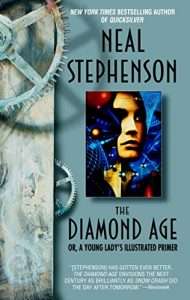 The high-low tension that exists in Snow Crash is, if anything, even more pronounced in The Diamond Age, which is set in a world where tech-savvy elites have retreated into cloistered enclaves, some of which fetishize Victorian fashion and manners, while poorer and less educated “thetes” content themselves with vulgar, mindless, often pornographic cultural pursuits and the low-quality abundance that has come from a world in which atoms are near-infinitely malleable.
The high-low tension that exists in Snow Crash is, if anything, even more pronounced in The Diamond Age, which is set in a world where tech-savvy elites have retreated into cloistered enclaves, some of which fetishize Victorian fashion and manners, while poorer and less educated “thetes” content themselves with vulgar, mindless, often pornographic cultural pursuits and the low-quality abundance that has come from a world in which atoms are near-infinitely malleable.
The book follows two main narrative paths: In one, a Victorian nanotech designer falls from grace after he attempts to provide his daughter with a stolen copy of the Primer, a specialized, iPad-like “book” that customizes its lessons to its owner. In the other, a young thete girl named Nell is given a copy of the book, and slowly advances her way through the sociological strata.
The setting, in which in which rich, highly educated tech workers live lives of intense personal restraint and desperately attempt to pmart bourgeoisie values and wealth to their children while the lower classes engage in the mindless pursuit of lowbrow pleasure, feels strangely relevant, like something out of a David Brooks column, or a conservative book club: If it were published today, it might be called Nanotech Elegy. Though it was written more than two decades ago, the novel’s social hierarchy seems to predict much of the Trump-era debate about the cultural divergence between the rural working class and the high-tech coastal elite.
The novel both acknowledges the importance of strong cultures, and also seems to argue that they are far from determinative when it comes to individual outcomes. One also gets the sense that the book was born partially out of frustration with traditional schooling; the leader of the Victorians was deeply bored with his schooling, and orders the Primer created in hopes of helping his daughter escape from its stifling conventions.
These sorts of cultural divisions appear repeatedly in Stephenson’s oeuvre: His 2008 novel Anathem tells a far future story of a world in which intellectuals charged with preventing the collapse of society live highly ordered monastic lives with extremely limited use of technology, and are prevented from any interaction with the outside world except on very rare, highly proscribed occasions. The final section of Seveneves is set in a post-extinction Earth, in which the human species has been reengineered into seven genetically and dispositionally distinct castes. Reamde, which is set partially in Iowa, returns again and again to notions of middle-American self-reliance, politeness, and competence, often juxtaposed with more conventionally liberal coastal values and attitudes.
Stephenson’s latest, Fall, takes place in an information-overloaded near-future where news and social media—which he dubs the Miasma—have become unfathomably chaotic. As a result, wealthy, educated residents of high-tech coastal cities hire personalized “editors” to manage their information streams. Poorer, rural, more traditionally conservative populations—they are fond of guns and violent, cultish religious practice—access unedited or algorithm-managed feeds of garbage news, and come to believe all manner of myths and falsehoods as a result.
These are concepts that Stephenson has toyed with for years: The Diamond Age notes briefly that the rich tend to read the same elite newspapers, rather than the personally customized trash favored by the lower classes. But it is not much of a stretch to say that it is a novel partially about the problem of fake news and online trolling.
Yet Stephenson, ever the problem solver, has also imagined a series of solutions—editors, public feeds, an anonymity system that allows people granular control over their digital identities. When one character’s reputation is threatened by an online character attack, our protagonists respond by releasing a massive dump of false and derogatory information about her—putting so much bad info into her search results that no one believes any of it. One way to fight bad information, he seems to suggest, is even more bad information.
*
Fall may not be Stephenson’s best novel, but it might be his most Stephensonian.
At roughly 900 pages, it is a smorgasbord of acronyms and ideas, action and exposition, characters and subplots. It sometimes feels more like a dozen novels, and a binder full of white papers, stuffed into a single book. It is sprawling not in the way of a city, but of a country or a continent; it begins as a science-fictional exploration of extending life through digitized brains, detours into a road-trip adventure through an America half-wrecked by AR and social media, briefly considers the privacy implications of a permanently connected society, pauses to explore both the ethical and technical implications of a world in which human consciousness can be digitally reanimated (the power consumption of large server farms turns out to be an important issue), and then, somehow, morphs into a quasi-fantasy novel inspired by the Bible, J.R.R. Tolkien, World of Warcraft, Dungeons & Dragons, Dante, and Greek mythology.
Actually, it’s a wonder it’s only 900 pages.
Through it all, he maintains a keen sense not only the ways that technology might evolve, but the cultural shifts it might entail, from news and social media to leadership and social structures in a virtual afterlife where people have limited senses of the self. Fall is not just a book about futuristic technology; it is an extended sci-fi thought experiment about the long-term evolution of human culture.
There is something similar to be said about bitcoin. Yes, it’s virtual money, with all sorts of implications for government-issued fiat currency and global markets. But it is also something larger, something more intrinsically conceptual—a system for the creation of trust between two anonymous parties without the aid of a government or other third party. Bitcoin is an idea, a very Stephensonian idea, about the ways that fragmented, atomized, disorganized people can, ultimately, figure out how to work together without the need for a stifling order to be imposed from above. It’s a technology of productive cooperation.
*
Stephenson is no utopian. His novels are filled with schemers, criminals, corporate hacks, goons, weirdos, bureaucrats, and politicians, who are generally regarded as a nuisance, at best. They occasionally detour in the kind of massive, antic shootouts that have irresistible appeal to a firearms enthusiast like Stephenson. But he is, at core, an optimist, someone who believes that humans can solve the problems they face.
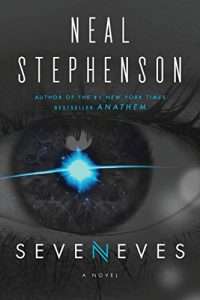 Nowhere is this more apparent than in Seveneves. The book starts with the explosion of the moon into seven large fragments, and the rapid realization that those large fragments will quickly break up, rain down on the planet, and make Earth unlivable for thousands of years. Governments, scientists, and billionaire entrepreneurs come up with a slew of schemes to help the species survive, and Stephenson, who once worked on rocket alternatives and trajectory analysis for private space company Blue Origin, describes them in extensive mathematical detail. The best of these schemes are based on distributed technologies rather than top-down planning.
Nowhere is this more apparent than in Seveneves. The book starts with the explosion of the moon into seven large fragments, and the rapid realization that those large fragments will quickly break up, rain down on the planet, and make Earth unlivable for thousands of years. Governments, scientists, and billionaire entrepreneurs come up with a slew of schemes to help the species survive, and Stephenson, who once worked on rocket alternatives and trajectory analysis for private space company Blue Origin, describes them in extensive mathematical detail. The best of these schemes are based on distributed technologies rather than top-down planning.
Thanks in part to political interference, after nearly 600 pages, the schemes all appear to have failed, leaving just a small band of women alive. But this is a Neal Stephenson novel, which means that having read almost 600 pages, you’ve still got several hundred to go.
So after the single most bonkers section header of any novel I have ever encountered—it just says “FIVE THOUSAND YEARS LATER”—Stephenson picks up the story, and explains how a genetically modified form of humanity survived, and then eventually reveals that many of the apparently failed schemes (living underground or under water, heading off to Mars) appear to have worked too, creating new evolutionary strands of humanity, and new human cultures, in the process. Humans lived through the planetary apocalypse, and it just made them weirder.
This relentless, unbounded optimism is not merely an approach to narrative. It is a philosophy of existence.
Over the past several years, Stephenson has devoted a considerable amount of energy to encouraging science fiction writers to create positive visions of the future, as opposed to the crusty, hopeless dystopias that often seem to dominate the field. Anathem was inspired partly by the Long Now Foundation, a nonprofit designed to support long-term thinking about humanity’s future. And Stephenson has worked with Arizona State University’s Project Hieroglyph, which in 2014 published an anthology of short stories imagining non-dystopian futures, in hopes, he has said, of inspiring inventions that could be made real in Stephenson’s lifetime. In his public speaking, he casually avers that the solar system has enough resources to meet essentially endless human demand. There are no limitations except the ones we place on ourselves.
“What science fiction can do” Stephenson once told Lightspeed Magazine, “is provide not just an idea for some specific technical innovation, but also supply a coherent picture of that innovation being integrated into a society and an economy.” More than almost any other contemporary fiction writer, Stephenson maintains a boundless faith in human ingenuity, in our capacity to overcome challenges through a combination of wit, cleverness, technical expertise, and exhaustive, exhausting, persistence—which, come to think of it, describes Stephenson’s fiction as well. Whether or not he is the real-world individual lurking behind Bitcoin’s avatar, Satoshi Nakomoto, he remains a science fiction writer who is not only determined to entertain, but to make the world a better place—even if it means inventing that future himself.
from Latest – Reason.com http://bit.ly/2XrWilf
via IFTTT
